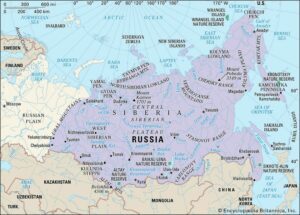Travelling across Siberia along Transiberian Railway of zar times is an unforgettable experience. The sense of a big space full of possibilities for human population, lakes, forests, plains, all seem to be infinite. In Western world I felt something similar crossing Canadian British Columbia and Alaska. But in Asia the contrast among northern China regions full of people and Mongolia and Siberia practically empty, is more impressive. And you are feeling a sense of relief visiting the rare big cities along the route, Irkutsk, Novosibirsk, Krasnojarsk, all extremely active and full of young people, with the monumental railway stations and theatres celebrating zarist civilisation of Siberia. The history of relations between China and Siberian Russia is complex and spans several centuries. Early Interactions (17th Century): initial contact occurred in the 17th century when the Russian Empire expanded eastward, leading to trade and cultural exchanges with Chinese territories.The Treaty of Nerchinsk (1689) marked the first formal agreement between Russia and China, establishing borders and easing tensions in the region. As both nations expanded in XIX century, competition for territory grew. The English Opium Wars weakened China’s position, and Russia capitalized on this instability. With two Treaties, Aigun and Peking, 1858-1860, China ceded important territories to Russia in Far Eastern part of Siberia. With the bolshevik revolution, the relationships between the two big powers fluctuated, especially during Chinese civil war, where support from SSSR was not only for communist party, which conducted to the split of the ’60ties years, also with military confrontation. After 1970 the relationships improved until the cooperation of today, pushed from USA foreign policy and the present Ukrainian war.
China and Russia have developed a robust economic partnership over recent years, characterized by cooperation across various sectors. China is Russia’s largest trading partner, with bilateral trade reaching over $100 billion annually(Italian total trade balance over 600 billion $). Major exports from Russia to China include energy resources, such as oil and gas, while China exports machinery, electronics, and consumer goods to Russia. Russia is a key supplier of oil and natural gas to China. The Power of Siberia gas pipeline, completed in 2019, allows Russia to supply significant volumes of natural gas to China, strengthening their energy ties. Chinese companies are increasingly investing in Russia, particularly in sectors like energy, infrastructure, and technology. Russia is also looking to attract Chinese investment to boost its economy. Both countries are involved in developing infrastructure projects that enhance connectivity, such as roads, railways, and the China-Mongolia-Russia Economic Corridor, aimed at improving trade and economic ties. China imports various agricultural products from Russia, including grains and meat. Russia is looking to expand its agricultural exports to China amid growing food security concerns. The two countries are exploring cooperation in technology and innovation, particularly in fields like telecommunications, space exploration, and artificial intelligence. China and Russia have increased collaborations between their financial institutions, including currency swaps and joint banking projects, aimed at reducing reliance on the US dollar in trade. The two nations are working together on regional development initiatives in Siberia and the Far East, focusing on economic growth and infrastructure improvements.Overall, the economic partnership between China and Russia is multifaceted, driven by mutual interests in trade, energy, and investment, aiming to bolster their respective economies while creating a counterbalance to Western influence.

